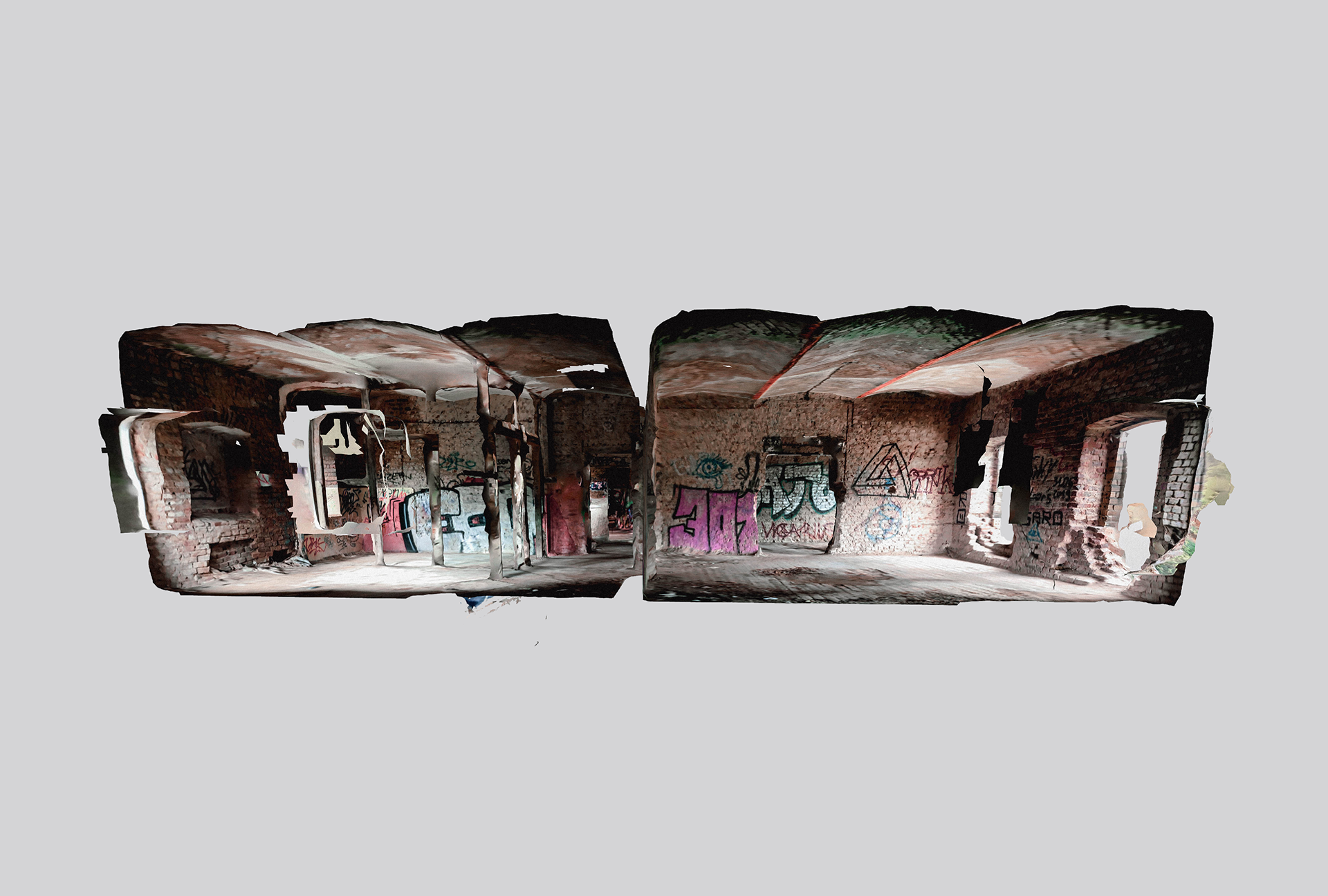The world is experienced by humans in three dimensions. In the age of 3D, heritage conservation is quickly adapting to shifting photographic technology. What does the future of heritage look and feel like?
Haus Fühlingen, formerly Villa Oppenheim, is an abandoned structure in Cologne. Originally built in 1886, it is now a place of mythology among urban explorers. Since 2023, the building has lost its monument status.
3D-scan of the ground floor of Haus Fühlingen

3D-scan of the attic at Haus Fühlingen

3D-scan of the arched gallery at Haus Fühlingen

3D-scan of two rooms at Haus Fühlingen

3D-scan of rooms and stairwell at Haus Fühlingen

3D-scan of arched gallery at Haus Fühlingen
The 3D-Scanning of Haus Fühlingen was part of Sensemaking Abandonment, a design research project on the collective reimagining of lost places. Research findings were presented at the Köln International School of Design.
Method of 3D-Scanning or Photogrammetry
Through photogrammetry, physical reality can be transformed into digital immersive reality. Further stories are enabled as physical pieces of our world are digitized three-dimensionally — a form native to human imagination.
Credits
3D-Scanning & Art Direction: Byron Co
3D Modeling & Architectural Design: Sally Loutfy
In Collaboration with Prof. Dr. Carolin Höfler at KISD
Font in use: SK Quadratica